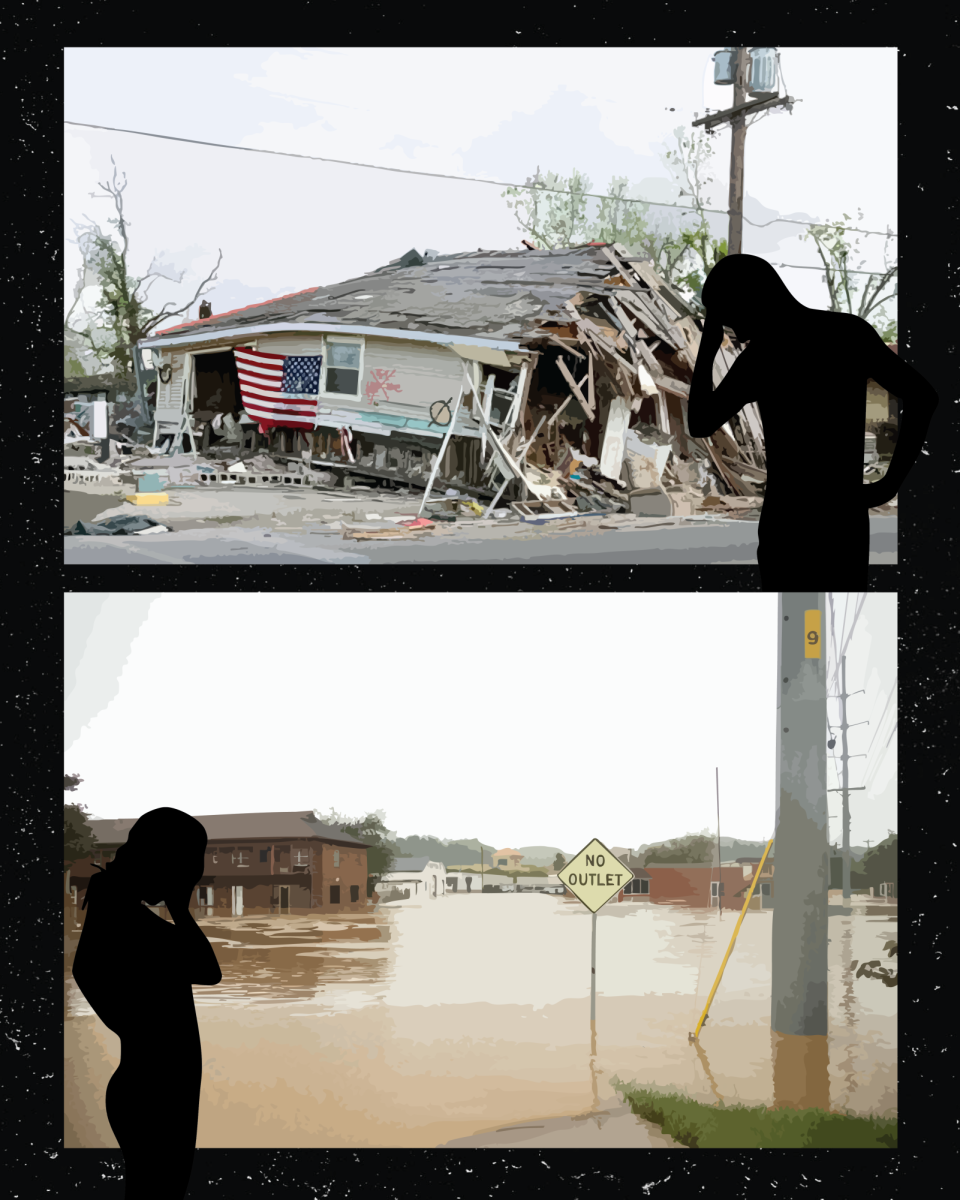Hurricane Katrina was devastating — a reminder of the significance of leaders who have the best interests of the people around them in mind, and how tragic it can be when they do not. With Katrina’s 20th anniversary just passing, it’s important to look back on the governmental shortcomings in our history.
Hurricane Katrina struck Louisiana and Mississippi in August 2005 as a category three, where it would quickly become one of the deadliest hurricanes in the United States. While some of Katrina’s destructiveness was because of the warm waters out in the Gulf of Mexico empowering the cyclone, the largest reason for Katrina’s destruction was governmental failure.
In an official report issued a year following the tragedy, Congress refers to Katrina as a failure of initiative and leadership. The reasons for this failure were large, and cannot be attributed to one individual or government entity, but rather a multitude of factors and cross-system government faultiness.
The levees in New Orleans were not built for severe hurricanes or the worst possible outcomes associated with them. Following Katrina’s storm surge, over 80% of New Orleans was underwater due to poor construction.
A report by the American Society of Civil Engineers was published the November following Katrina, outlining that most of the earthen levees were constructed of sand or shell fill, an easily erodible material. Transitions of materials used, crest heights and levee types caused weakness in the levees, with the material used at the transition points being prone to failure.
The inadequacy of evacuations also increased casualties and delayed relief. Warnings were provided 56 hours before Katrina’s landfall in Louisiana, but Gov. Kathleen Blanco and Mayor Ray Nagin did not issue a mandatory evacuation until 19 hours before. The evacuation was incomplete due to the late notice, forcing many citizens to shelter-in-place, leading to poor conditions for those trapped and risky rescue situations.
Critical elements of the National Response plan were executed late, ineffectively or not at all. Former President George W. Bush declared a state of emergency regarding the danger of Katrina just two days before the hurricane made landfall in Louisiana, hindering effective response time and proper government aid.
There was little preparation, communication about and coordination of medical care and evacuation procedures ahead of Katrina. Advanced planning and positioning of medical supplies ahead of the storm’s landfall was lackluster, leading to delays and shortages of medical supplies and insufficient body recovery efforts. There was also little information provided by local hospitals and medical centers regarding evacuation, especially for those in need of assistance like nursing home residents and people with disabilities.
There were also struggles with improper military coordination, lack of effective public communication, insufficient emergency housing and supplies from the Federal Emergency Management Agency. These issues paired with the magnitude of the disaster led to delayed relief, increased mass desperation, widespread civil unrest and preventable deaths.
Following the tragedy of Katrina, government officials and entities such as the Department of Homeland Security and FEMA should have been better equipped to handle another event of this magnitude. Unfortunately, as shown by Hurricane Helene, that was not the case.
Helene first made landfall in Florida, Alabama, Louisiana, Mississippi and Tennessee in September 2024 as a category four storm, one rank higher than when Katrina first made landfall in Louisiana.
Helene brought record-breaking rain and floods to North Carolina, causing $78.7 billion in damages to Asheville and surrounding areas. The novelty of these damages paved the way for Helene to become the deadliest hurricane to strike the U.S. since Katrina.
Even with the increases in weather events similar to that of Helene, FEMA’s preparation and warnings do not reflect the amount of urgency required for the conditions. The North Carolina flood maps provided by FEMA pre-Helene failed to include the risks certain areas may face due to rainfall, streams, creeks and the topography of the region.
The poor assistance North Carolina faced under FEMA’s response to Helene is a painful reminder of how little government reform has taken place since Katrina, with many businesses and areas across North Carolina largely devastated.
Despite Appalachia’s growing needs, President Donald Trump made the decision in January to rescind and defund FEMA initiatives put in place by former President Joe Biden. The initiatives acknowledged the climate crisis, responses to natural disaster-related damages, public health, environmental protection and scientific research.
Trump has fired more than 200 FEMA employees and cut federal funding to other aid organizations like the Legal Services Corporation experienced in December 2024. The LSC is known for giving countrywide support to nonprofit legal aid organizations, while also helping survivors with insurance, price gouging, prejudiced treatment and ways to identify systemic biases within the distribution of federal and state funds among underprivileged communities.
Trump has also refused to follow procedure in cases of revocation or revision of regulations placed by the Biden administration.
Those still trying to recover from the damage caused by Helene will struggle more under these new circumstances, especially if another disaster occurs. North Carolina residents are still facing high barriers with recovery, especially in terms of proper housing access.
Following this year’s hurricane season, Trump has plans to “phase-out” FEMA’s capabilities, leaving this issue of recovery and damage relief to the states as opposed to the federal government.
As of 2022, the number of impoverished people in North Carolina was estimated to be just over one million with 24.9% of Watauga County residents projected to be below the poverty line. With the possibility of decreased federal funding, underserved communities will struggle significantly more.
Disaster relief systems such as FEMA have no chance of improving if Trump is adamant about refusing to help the citizens most susceptible to natural disasters. The damages following Katrina could have been lessened. Helene didn’t have to become the deadliest hurricane to strike the U.S. since Katrina. The issues that resulted from these tragedies could have been dampened.
Despite the 20 years of time between the tragic events of Katrina and Helene, there are too few differences to be found. The federal cuts FEMA has faced post-Helene will eventually generate experiences that mirror what the citizens of New Orleans faced in the aftermath of Katrina.
Government leaders will grow neglectful of the people they serve, emergency response teams will be ill-equipped due to decreases in funding and the overall effectiveness of proper disaster responses will dwindle.
More disasters will happen, especially with the growing consequences of climate change, and more people will die unnecessarily until the U.S. government decides that the citizens are worth fighting for. FEMA doesn’t need funding cuts or more firings, it needs reform.




MuChao • Sep 22, 2025 at 3:11 pm
Lest anyone forget:
Our own representative, Virginia Foxx (experienced Trump bootlicker and verified ghoul), made a name for herself, only nine months after first taking office, as being one of only eleven members of congress to vote *against* funding a federal aid package to victims of Hurricane Katrina.